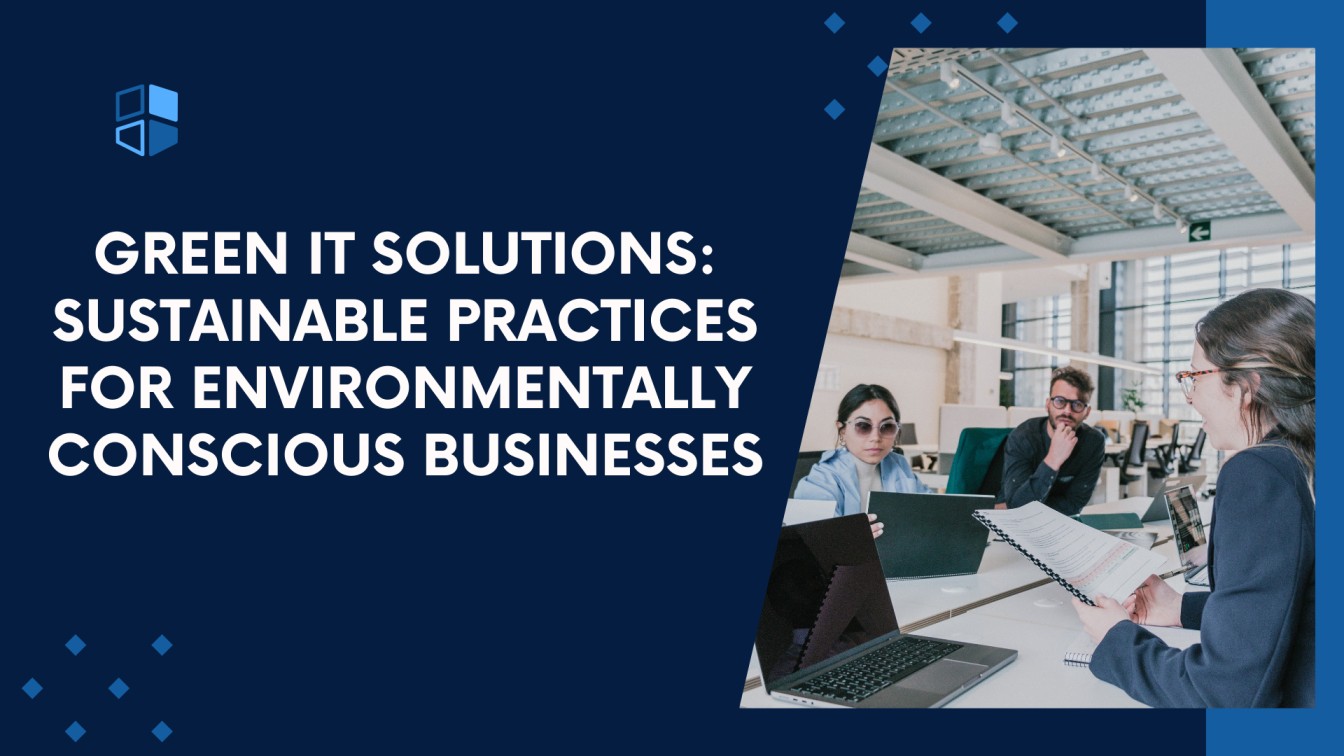In today’s world, the environmental impact of business operations is a critical consideration. Green IT solutions offer a way for businesses to operate sustainably while maintaining efficiency. This article explores the key practices for integrating Green IT solutions into business operations.
Note: Click to know about Best IT Company in Ranchi
1. Introduction to Green IT Solutions
Green IT, or Green Information Technology, refers to environmentally sustainable computing. This involves designing, manufacturing, using, and disposing of computers, servers, and associated subsystems efficiently and with minimal impact on the environment.
2. Benefits of Green IT
Green IT solutions offer numerous benefits, including:
-
Reduced Energy Consumption: Implementing energy-efficient hardware and software can significantly reduce the amount of electricity used by IT systems.
-
Cost Savings: Lower energy usage translates to reduced operational costs. Additionally, efficient systems often have longer lifespans, saving on replacement costs.
-
Regulatory Compliance: Many regions have regulations that require businesses to adhere to environmental standards. Green IT solutions help businesses comply with these regulations.
-
Enhanced Corporate Image: Companies that adopt sustainable practices often enjoy a better public image, which can attract environmentally conscious customers and investors.
3. Sustainable IT Practices
Adopting sustainable IT practices can significantly reduce the environmental impact of a business’s IT operations. Key practices include:
a. Virtualization
Virtualization allows multiple virtual servers to run on a single physical server, reducing the number of physical machines needed. This leads to significant energy and cost savings.
b. Cloud Computing
Cloud computing services often use highly efficient data centers, reducing the overall energy footprint compared to traditional on-premises data centers. Businesses can scale resources up or down as needed, ensuring optimal use of energy and resources.
c. Energy-Efficient Hardware
Investing in energy-efficient hardware, such as servers with low-power processors and storage devices with power management features, can greatly reduce energy consumption.
d. E-Waste Management
Proper disposal of electronic waste (e-waste) is crucial. Recycling old hardware and partnering with certified e-waste recycling companies ensure that electronic components are disposed of responsibly.
4. Green Data Centers
Data centers are significant energy consumers. Implementing green practices in data centers can lead to substantial environmental benefits. Key strategies include:
-
Efficient Cooling Systems: Using advanced cooling technologies, such as liquid cooling or free cooling, can reduce the energy needed to maintain optimal temperatures in data centers.
-
Renewable Energy Sources: Powering data centers with renewable energy sources, such as solar or wind power, can significantly cut down on carbon emissions.
-
Energy Monitoring and Management: Implementing systems to monitor and manage energy use in real-time helps identify areas for improvement and ensures efficient energy consumption.
5. Sustainable Software Development
Software development practices also play a role in Green IT. Sustainable software is designed to be energy-efficient, using fewer resources to perform tasks. Key considerations include:
-
Optimized Code: Writing efficient code that requires less processing power and memory can reduce the energy consumption of software applications.
-
Scalable Architectures: Designing software that can scale efficiently ensures that it uses only the necessary resources at any given time.
-
Sustainable Development Frameworks: Using frameworks and tools that support sustainable development practices can help create more environmentally friendly software.
6. Employee Awareness and Training
For Green IT solutions to be effective, employees must be aware of and trained in sustainable practices. This can include:
-
Awareness Programs: Educating employees about the environmental impact of their actions and how they can contribute to sustainability efforts.
-
Training on Energy-Efficient Practices: Providing training on using energy-efficient equipment and software, as well as best practices for reducing energy consumption.
Note: Click to know about App Development Company in Ranchi
7. Conclusion
Adopting Green IT solutions is not just about reducing environmental impact; it also offers significant business benefits. From cost savings to regulatory compliance and enhanced corporate image, the advantages are clear. By implementing sustainable IT practices, businesses can play a crucial role in creating a more sustainable future.





